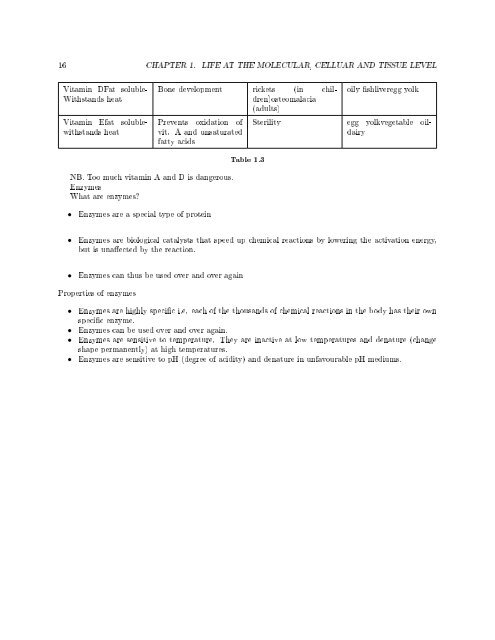Siyavula: Life Sciences Grade 10 - Cd3wd.com
Siyavula: Life Sciences Grade 10 - Cd3wd.com
Siyavula: Life Sciences Grade 10 - Cd3wd.com
You also want an ePaper? Increase the reach of your titles
YUMPU automatically turns print PDFs into web optimized ePapers that Google loves.
16 CHAPTER 1. LIFE AT THE MOLECULAR, CELLUAR AND TISSUE LEVELVitamin DFat soluble-Withstands heatVitamin Efat solublewithstandsheatBone development rickets (in children)osteomalacia(adults)Prevents oxidation ofvit. A and unsaturatedfatty acidsoily shliveregg yolkSterility egg yolkvegetable oildairyNB. Too much vitamin A and D is dangerous.EnzymesWhat are enzymes?• Enzymes are a special type of proteinTable 1.3• Enzymes are biological catalysts that speed up chemical reactions by lowering the activation energy,but is unaected by the reaction.• Enzymes can thus be used over and over againProperties of enzymes• Enzymes are highly specic i.e. each of the thousands of chemical reactions in the body has their ownspecic enzyme.• Enzymes can be used over and over again.• Enzymes are sensitive to temperature. They are inactive at low temperatures and denature (changeshape permanently) at high temperatures.• Enzymes are sensitive to pH (degree of acidity) and denature in unfavourable pH mediums.




![Mum, int. [man] - Cd3wd.com](https://img.yumpu.com/51564724/1/190x134/mum-int-man-cd3wdcom.jpg?quality=85)











